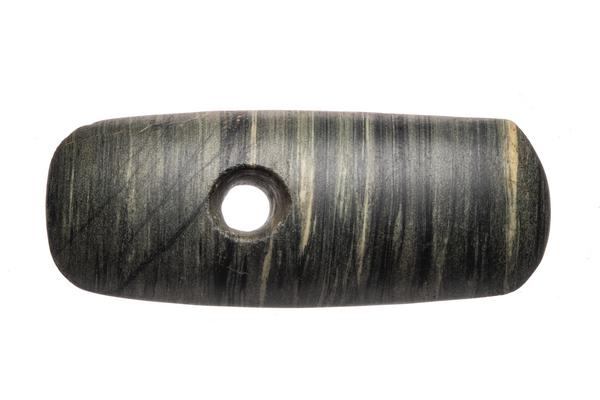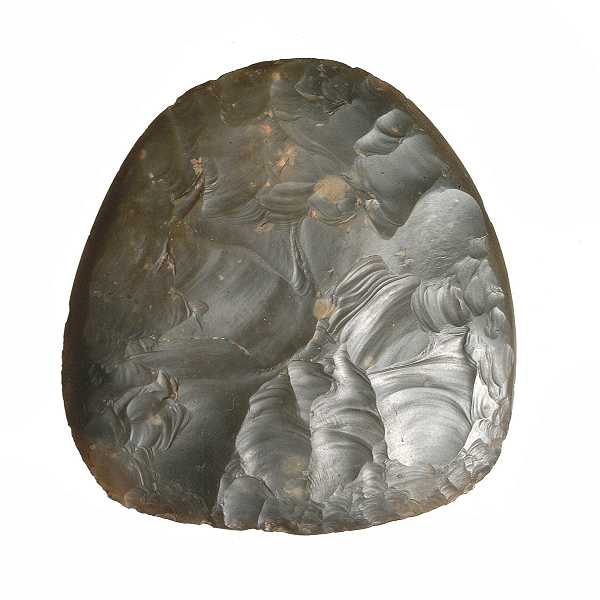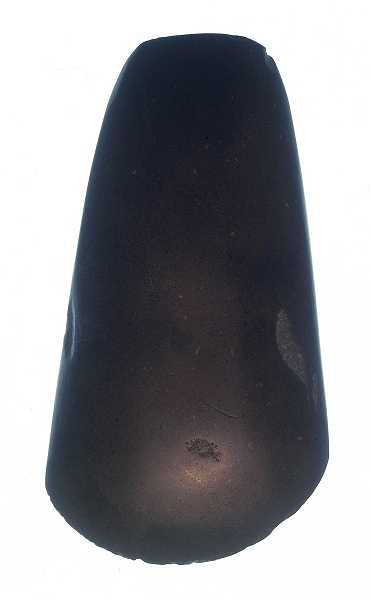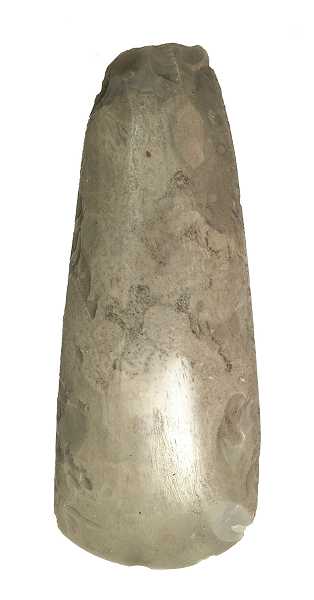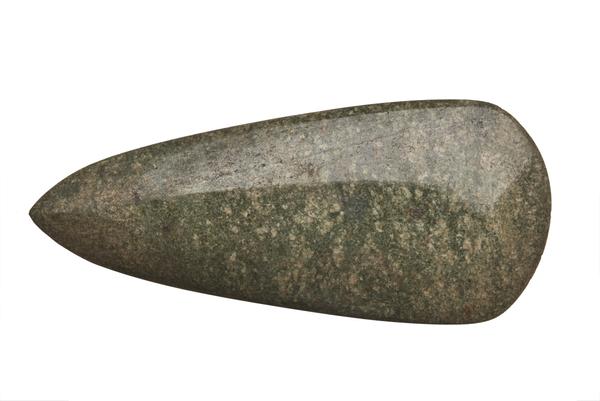How a Neolithic jade axe came to Mortlake
The jade used to make this axe was mined in Italy around 6,000 years ago. The journey which brought it to Mortlake, south-west London can tell us about Neolithic trade, craft and beliefs.
Mortlake
4,000 BCE
Impractically beautiful
The axe-head was found in the River Thames. Rivers held great importance in the Neolithic period, and this axe may have been some kind of offering.
It wouldn’t have been thrown away lightly. The axe is a skillfully made object – one which would have taken a craftsperson around 100 hours to grind and polish.
This wasn’t made to be used. It’s too thin for that. Instead it was prized for its beauty, and its meaning.
The axe’s journey shows us that, even 6,000 years ago, trade connected people across Europe. People who devoted time to creating precious objects. And people who valued the beautiful objects they created.
Italian jade
Around 6,000 years ago, skilled miners dug into the mountains in the Italian Alps to extract precious green jade.
This jade was shaped and polished to form axes. From there, people travelled with the axes as far as the Black Sea to the east, and Scotland in the far north-west of Europe.

The Italian Alps, where this jade was mined.
“Many beautiful polished axes have been found in the river. This is not accidental”
Not just an axe
Axes were everyday objects. Most people owned one in the Neolithic period.
Axes were used to cut down trees, to shape wood, to build shelters and boats, to make tools and, most importantly, for firewood. So while they were common tools, they were very important for society.
People valued their axes. Their connection to the object was more than practical. That might explain why you’d make an axe from this rare and beautiful mineral.

An axe-head and handle from the British Museum.
Could it be used?
This axe from Mortlake has been identified as jadeite – a very strong type of jade.
The earliest jade axes we’ve found were strong enough to be used. However, the later axes were shaped to be very thin, to show off the quality of the stone. These would probably fracture if they were used on wood.
Neolithic craftspeople could create effective tools, but the appearance was also important.
How did Neolithic people live?
The Neolithic period – also called the New Stone Age – was a time of enormous change and transformation. Around 6,000 years ago, people travelled from what is now Europe to Britain, bringing farming with them.
Before this, the British population lived a mobile life. They hunted animals, gathered fruit and plants, and caught fish using harpoons, nets and traps.
The new people brought domesticated cows, pigs, sheep and goats with them, as well as seeds.
They brought the building blocks of a settled lifestyle, which gradually became the dominant way of life.
The journey of the jadeite axe
At this time, the main form of transport was by boat, along rivers and the seas. People travelled long distances, moving animals and materials, including good quality stone. They also shared ideas, news and stories.
The tools brought by the new people would have amazed those already living here.
Did this create a demand for polished axes? That’s unclear. But around this time, we begin to see polished axes made from flint and other stone arriving from places such as Wales, Cornwall, Cumbria and Scotland.

A polished stone axehead. The stone came from Cumbria in north-west England.
Hours and hours and hours of polishing
People invested a huge amount of time and effort to create these tools. It took around an hour to shape flint into an axe. Polishing it took another 40 hours.
Jade was even more intense. Making a jade axe would involve more than 100 hours of grinding and polishing.
“For the Neolithic people, objects held power and meaning”
First impressions
The jade axe would have been an impressive object, something people hadn’t seen before. In daylight, it has an almost glass-like appearance, with different shades of green. It’s smooth, and lovely to hold.
By firelight it would sparkle as the light danced across the surface. Held up to the fire, it would almost glow as the light travelled through the thin edges. It might have seemed magical.
The power of nature
For the Neolithic people, objects held power and meaning. This meaning was linked to where the object was from, how it was created and how it came to the owner.
Mining jade in the mountains was dangerous – it required skill, respect and knowledge.
This jadeite has been mined from deep within the mountains and brought into the daylight. Its green colour could have been linked to the colour of plants, to new growth in spring, and the end of winter.
It’s thought that Neolithic people’s understanding of the world was divided into the “below world” beneath the ground, the “above world” of the sky with the stars and sun, and then the “world where people walked”.

Rivers may have been very spiritual places for Neolithic people.
Why was the axe in the river?
Rivers link physical places, but they may also have been viewed as a link between the above world and below world. Possibly, also between life and death.
Many beautiful polished axes have been found in the river. This is not accidental.
The river was a powerful place and these objects were deliberately placed within it. Perhaps to give thanks, perhaps as an offering to ensure safe travel, health or wealth. We will never know why.






